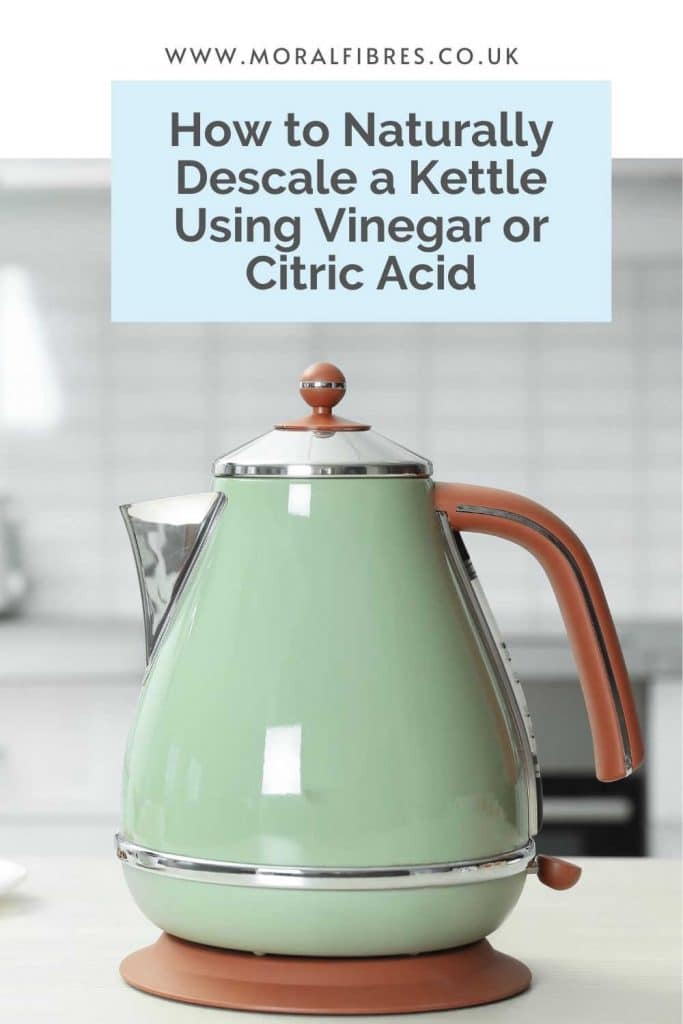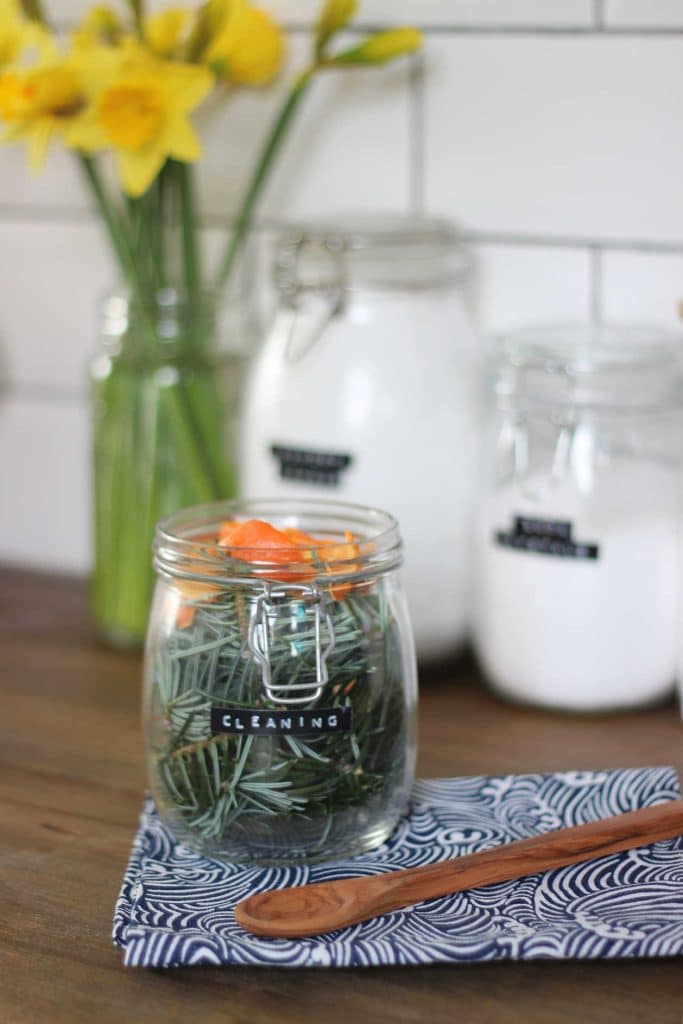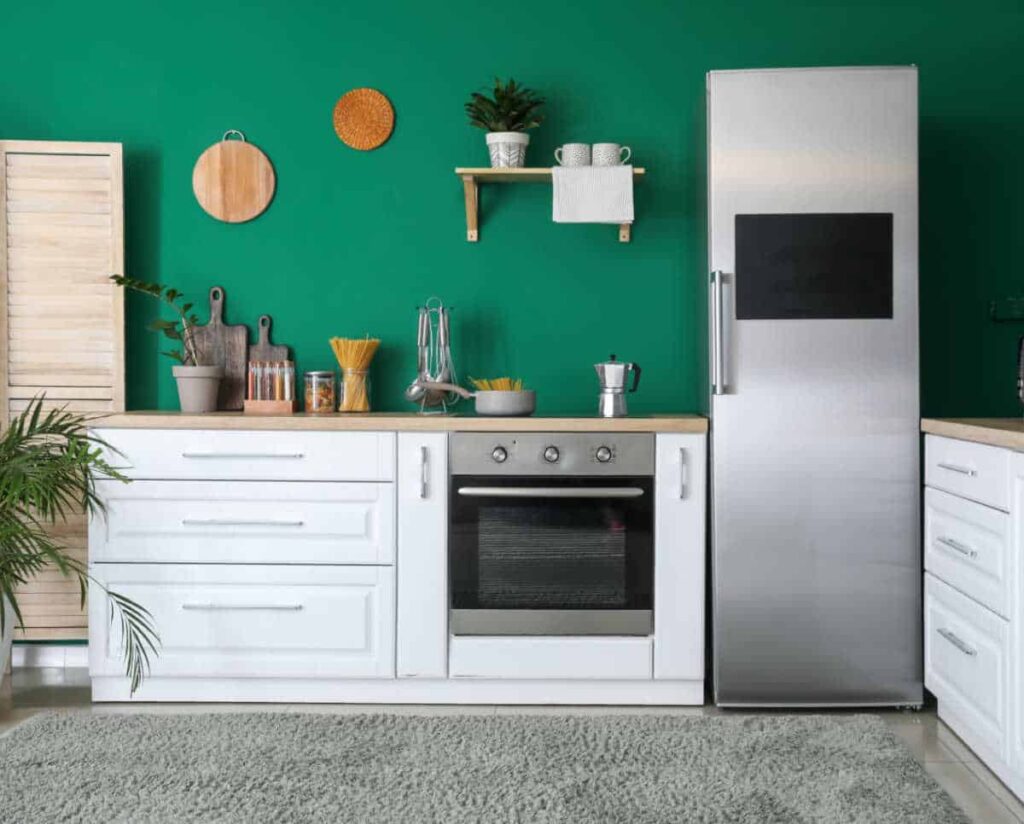How to Descale A Kettle With Vinegar or Citric Acid
To support the running costs of Moral Fibres, this post contains affiliate links. This means Moral Fibres may earn a small commission, at no extra cost to readers, on items purchased through these links.
Don’t let limescale ruin a perfectly good cup of tea. Here’s how to quickly, easily, and naturally descale a kettle two ways – with vinegar or with citric acid – whatever you have to hand.
I blog about tea quite a lot. That’s because I’m pretty partial to a cup myself. Whether it’s herbal tea that I’ve grown by myself – such as mint tea or lemon balm tea – or helping you to find the best plastic-free teabags, tea is never far from my thoughts or my lips!
Whilst there’s nothing like the thought of plastic in your tea to ruin a perfectly good cup of tea, limescale is a close second. Let me show you how to descale a kettle naturally, two ways – one way with vinegar, and another with citric acid – so you never ruin a good cup of tea again!
What Is Limescale And Is It Bad For You?
Firstly, what is limescale? Limescale is a harmless chalky white residue that accumulates in appliances that use water, such as kettles, coffee machines, dishwashers, and washing machines. Limescale is particularly prevalent in hard water areas. Here, in this mineral-rich water, higher concentrations of calcium and magnesium dissolve in water, leaving limescale deposits as they evaporate.
Limescale is completely harmless to your health and isn’t bad for you to drink. Calcium and magnesium are both minerals found in the body, so consuming them in your water poses no risk.
The problem with limescale in your kettle is that it can spoil your tea a little. However, its greater problem is the effects of limescale on our appliances. Limescale can shorten the lifespan of your kettle because it can corrode the elements. Limescale deposits also negatively impact the energy efficiency of your kettle. This means it takes longer, and uses more energy and therefore money, to heat up the water, and also reduces your kettle’s lifespan.
In short, whilst limescale is not harmful to your health, it’s best to tackle limescale on a regular basis. Doing so will prolong the life of your appliances and save energy, particularly if you live in a hard water area.
How to Naturally Descale A Kettle

Thankfully, it’s really easy to descale your kettle. You can buy expensive and chemically dubious kettle descalers. However, I say save your money and use these natural yet effective methods to descale your kettle:
- How To Descale A Kettle With Vinegar
- How To Descale A Kettle With Citric Acid
- How To Prevent Limescale
How To Descale A Kettle With Vinegar
Descaling your kettle with vinegar is really simple and cost-effective.
- Simply buy a bottle of white vinegar and add equal parts water to equal parts vinegar (e.g. 500 ml water and 500 ml white vinegar) to your kettle.
- Next, boil your kettle and then leave the vinegar/water solution to sit for an hour before tipping the water out. You may need to give your kettle a little scrub to remove any lingering limescale, but it should come off easily.
- Finally, rinse out your kettle thoroughly, and then boil some water to remove any trace of vinegar.
If you are new to using white vinegar for cleaning purposes, then here is everything you need to know about cleaning with white vinegar.
How to Descale A Kettle With Citric Acid
Citric acid is, I have to say, my preferred method to descale a kettle naturally.
- All you have to do is add 1 tablespoon of citric acid to half a kettle of water.
- Allow the water to boil and then leave it to sit for an hour.
- Next, tip the water out, and scrub away at any lingering limescale. Again, it should come away easily. Finally, give your kettle a good rinse out and the job’s done! Citric acid won’t leave an aftertaste, so there is no need to reboil the kettle again. Less faff equals more time for tea drinking!
New to the amazing superpowers of citric acid? It’s an amazing natural cleaning product that packs a mean punch against limescale. This is because it’s a highly concentrated fruit acid, and as such citric acid is a key element in my green cleaning arsenal. As well as being useful to clean your kettle, you can also use the leftover citric acid to make this amazing citric acid cleaning spray. This is a great natural cleaning spray, that’s especially useful if you aren’t into the smell of vinegar.
Worried about tracking it down? Worry not, citric acid is easily available in homebrew shops, Asian supermarkets, or online. Find out more about the wonder that is citric acid in my full guide to citric acid for cleaning.
How To Prevent Limescale
If you live in a hard water area, then limescale is a fact of life. It’s just one of those things that you have to get in the habit of descaling your appliances, such as your iron, kettle, dishwasher, or washing machine, regularly, to help prolong their life.
However, when it comes to your kettle, there are steps you can take to help reduce the need to descale it as often. One of these is to use a water filter to filter your water before filling the kettle. Water filters used to be pretty wasteful, however, you can now buy reusable water filters, meaning there’s no plastic waste. I wrote about this Phox water filter here some time ago, when they were in the fundraising stage, and it’s great to see it now available for sale.
You can also buy a reusable stainless steel limescale catcher for your kettle. This clever product lives in your kettle and absorbs the calcium carbonate that causes limescale. Every so often, when it turns a white colour, just take it out and give it a wash. Once you’re done, pop it back inside your kettle and you’re good to go again.
Thanks for letting me chat through kettle cleaning with you! Now time for a good old (limescale-free!) cuppa I think!
Found this post useful? Please consider buying me a virtual coffee to help support the site’s running costs.




